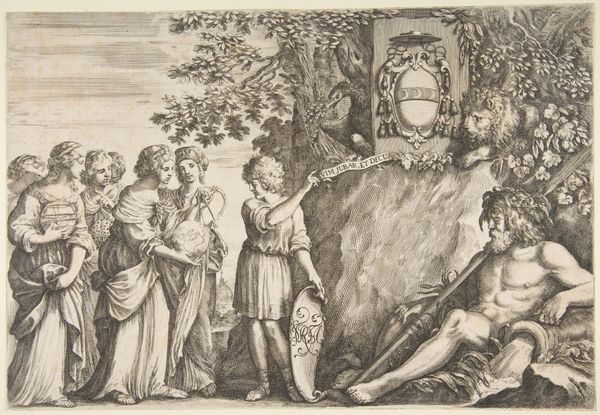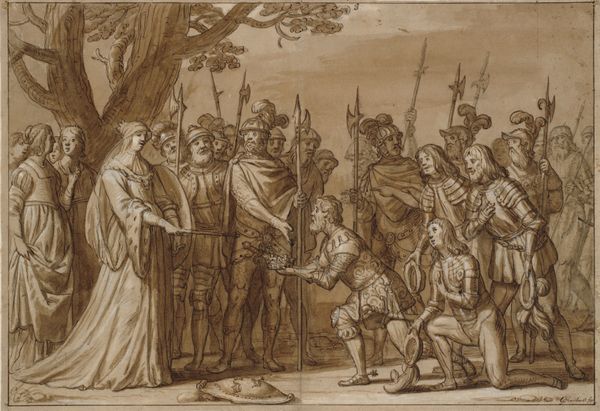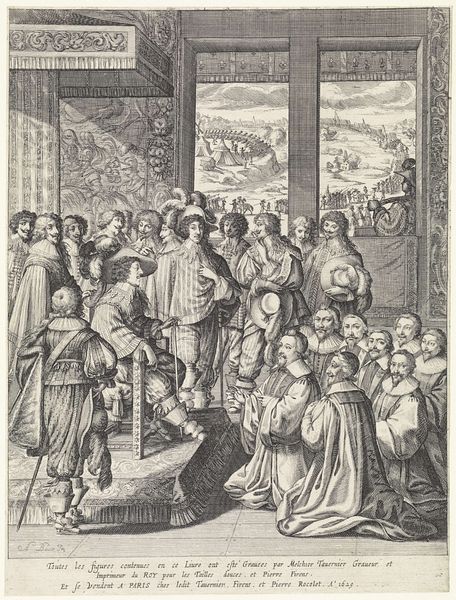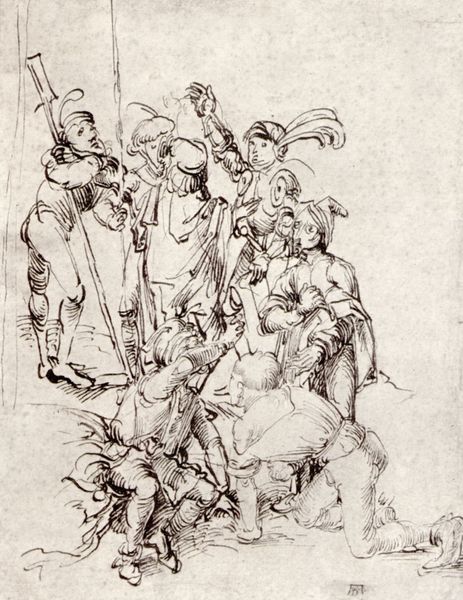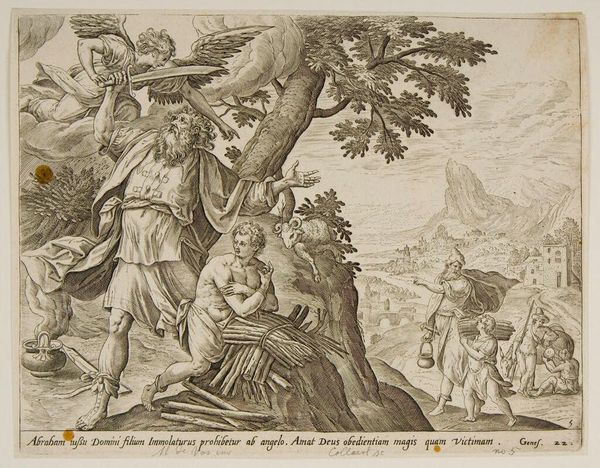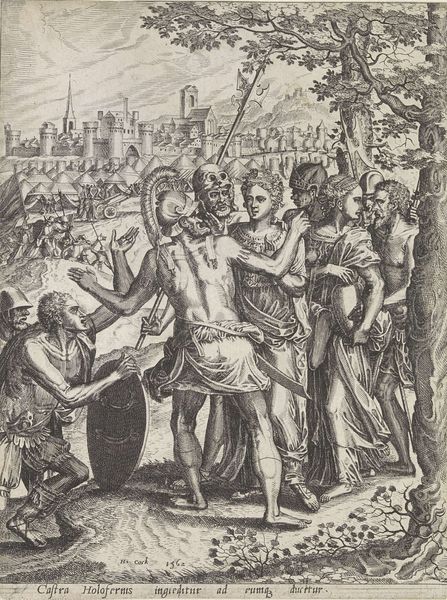
painting, oil-paint
#
portrait
#
venetian-painting
#
painting
#
oil-paint
#
landscape
#
figuration
#
11_renaissance
#
oil painting
#
child
#
mythology
#
genre-painting
#
history-painting
#
italian-renaissance
Dimensions: 50 x 43 cm
Copyright: Public domain
Curator: Welcome. Here we have Paolo Veronese’s “Rescue of Moses from the waters of the Nile," dating to around 1580, an oil painting currently held in the Museo del Prado. Editor: The scene feels quite pastoral and vibrant, even for such a charged moment. It lacks the solemnity I'd expect. Curator: Veronese masterfully arranges the figures. Note how the artist uses a clear pyramidal composition—grouping the figures in the foreground around the central act of rescuing Moses. It creates balance. Editor: Yet the opulence of the fabrics and the presence of enslaved individuals clash. While seemingly a celebration of salvation, the backdrop whispers a counter-narrative. The racial dynamics and social hierarchy cannot be ignored. It underscores the privilege embedded in even miraculous moments. Curator: The vibrant Venetian color palette certainly emphasizes the richness of the scene, doesn't it? And the use of light, specifically how it glints off the silks and skin tones, enhances the overall dynamism of the image. It’s a superb example of Venetian painting techniques. Editor: But look closer, wouldn't you agree that Veronese has Europeanized the narrative? The exotic "Orient" becomes a Venetian spectacle, displacing and reimagining a foundational story within a very specific colonial context. This isn't merely depicting a biblical scene; it's about power. Curator: It's undeniable that the grandeur and rich textures command attention. Veronese creates a world complete in itself through careful brushwork and detailed depiction. It's beautiful craftsmanship. Editor: And its seductive beauty further camouflages uncomfortable truths about cultural appropriation, forced labor, and the projection of power onto a religious narrative. Art must be held responsible for these elisions, don't you agree? Curator: Fair point, though I find its lasting legacy rests primarily in its aesthetic execution. Editor: Precisely. And the tension between beauty and power – it remains vital for critical dialogue to be as present as it has been for centuries, now, more than ever.
Comments
No comments
Be the first to comment and join the conversation on the ultimate creative platform.
